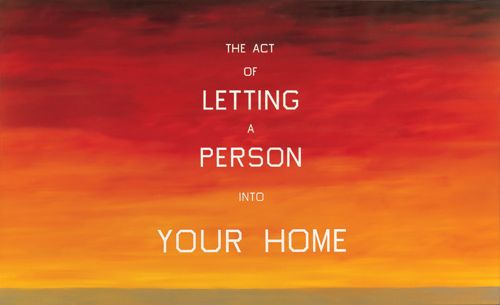Students came to class yesterday with works in progress that were inspired by our recent visit to see Visual Conversations at the Fisher Landau Center for Art. In my previous post two weeks ago I said that I was interested in encouraging students to draw relationships between works of art and to think about how context affects what we see. Can works of art “speak” to the viewer or have “conversations” with other works? If so, how? Today was the day, after a long Thanksgiving weekend, for the group to share works in progress and get some feedback from one another.
What initially impressed me as we took a look at the works was that students were inspired by a variety of pieces in the show, rather than choosing a popular few, and many began with both ideas and techniques featured in the exhibition. Mark Tansey’s monochromatic works inspired a very different approach to rendering forms with one student while Andy Warhol’s self portraits gave way to new considerations around what can be a “portrait”. I saw students who chose Ed Ruscha’s billboard-like paintings and created works of delicate beauty in response to the large, imposing pieces featured in Visual Conversations.
As students spoke about their work and got feedback from each other, I began to realize that the “conversation” was not so much about what they created after seeing the show, it was about the kind of conversation these works inspired within the students themselves. For example, one student was enamored with a portrait of Emily Fisher Landau and spent almost a full hour with the work sketching and making notes. As she reflected on the painting, she was able to begin articulating an interest in both beauty and power, which may or may not become her focus for a series of works this year.
One of the biggest reasons to get students to see Visual Conversations with me was simply to see works of art in person. Teaching about particular forms and approaches to art making without the actual experience of seeing the work firsthand is extremely difficult and it’s why, whenever I can, that I encourage colleagues to take students OUT of the building to engage directly with works of art. You don’t always need a big museum, either. Sometimes the best works to teach with are within our own communities. It’s amazing, really, that we spend so much time with our students making things and not nearly enough time looking at and discussing art in order to create work that is more meaningful, informed, driven by big ideas, and of course, well designed.




